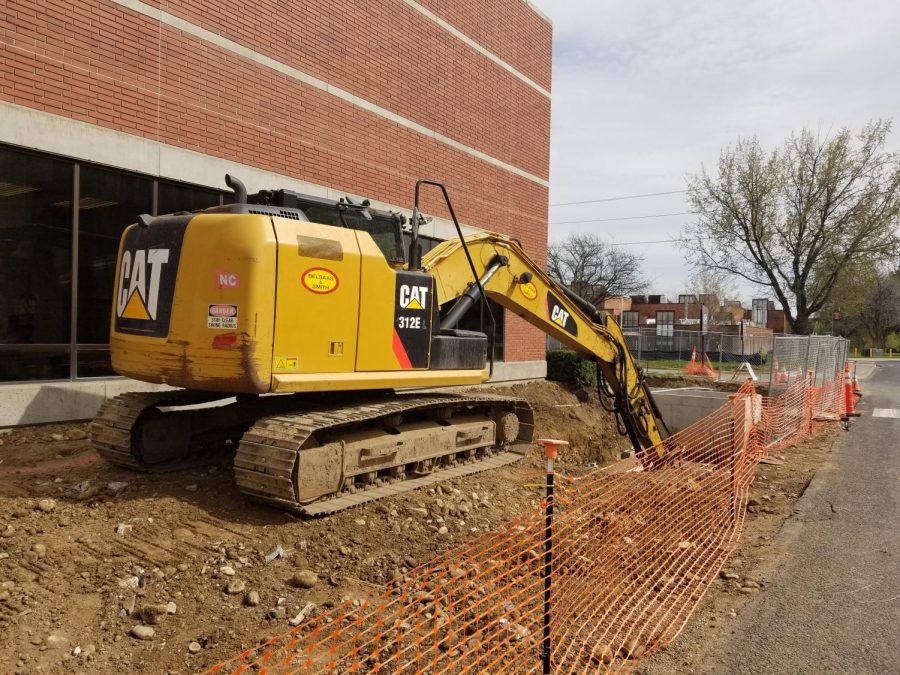CWU campus builds to provide students their best collegiate experience
June 7, 2022
CWU’s main goals for building projects on campus are to “fulfill the academic needs of students” while maintaining a sustainable campus, said the director of Capital Planning & Projects, Delano Palmer.
CWU’s Capital Master Plan describes their vision as, “A strong commitment to engaged learning and scholarship, internationalism, sustainability, inclusiveness, and life-long learning.”
Incoming students can look forward to several campus building projects planned for the next four years.
Priorities
According to Palmer, with every project plan the committee asks themselves, “Is this meeting the future strategy of CWU to serve our students?” He said this ensures “that [students] are having the best academic experience.”
Besides student’s academic needs, other factors the committee considers are Americans with Disabilities Act (ADA) accessibility, sustainability, energy efficiency, building codes and maximum classroom efficiency.
About sustainability, Palmer said, “Every capital project we do an evaluation on impact.”
The university abides by the certification standards for green buildings of the Leadership in Energy and Environmental Design (LEED).
Palmer said one of the university’s priorities is to maintain healthy green space and walkways.
“Those [green spaces] are really important for the CWU campus and the beautiful scenery we have around here,” Palmer said.
The Future of Building at CWU
CWU’s future building plans include considerations for maximum flexibility in hybrid learning.
“During the pandemic we realized the importance of being able to be hybrid and have classes online,” Palmer said. “But there’s always still the desire to have traditional collegiate experience of a face-to-face interaction. So, in that we try to balance the two, see what the students are looking to do, and based upon that incorporate that into [the project]”
Palmer said that Distance Education classrooms are being set up with technology to accommodate hybrid learning, such as utilizing Teams or Zoom, high-tech cameras and microphones.
Palmer said these adaptations make it so “students and faculty can still interact with each other and have that one-on-one relationship that is really part of the collegiate experience, where students feel a part and included as far as what is happening with their education.”
Schedule
Major capital building projects at the university work on a biannual basis. Palmer explained that typically they have one major project in construction, followed by a project in the design stage and lastly a project in pre-design.
In addition, stand-alone projects are completed in less time, such as acquisitions, renovations, expansions and infrastructure, including underground utilities.
Health Sciences Building
The Health Sciences building, a $60 million dollar project, was completed and opened in April.This state-of-the art facility, an 80,748 square-foot building, now houses programs such as
nutrition and food science, biomechanics, paramedicine, exercise physiology and public health.
Features of the new building include electric charging stations expansion, 9000 square feet of solar panels and the use of low-emitting paint and adhesives for better air quality.
Dr. Ethan Bergman, Health Sciences Department chair, said, “The state-of-the-art classroom and lab spaces will provide the next generation of students and graduates with hands-on experience with the latest technology and equipment they will use in their careers.”
Chicena Mortimer, Master of Science in Integrative Human Physiology, said having the program all in one building makes it much easier for health science students to commute on campus.
“Fall and winter we were scattered all throughout campus from Purser Hall to Samuelson to Dean to Farrell,” Mortimer said.
According to Mortimer, this is the first time they have ultrasound imaging equipment in the university. She called the new facility an “amazing, beautiful building.”
Palmer said, “[The design is] quite apparent when you walk into the main atrium of that facility. It is a testament to where we are as an institution and where we want to be and the type of education we are intending to provide for our students.”
Nicholson Pavilion and Purser Hall
The Health Education Project, a $60.5 million project, has the goal of completion by the fall of 2023.
Both academic and athletic expansions on the building started with a ground-breaking ceremony in April.



